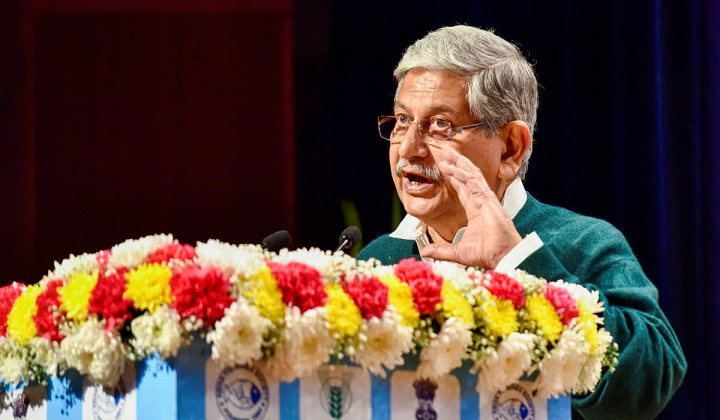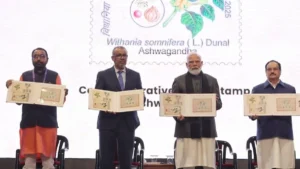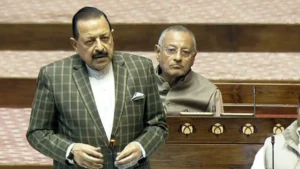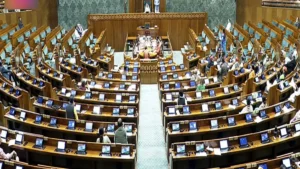India has emerged as the top milk producer in the world, with a current production of 239 million metric tons (MMT). Union Minister of Animal Husbandry and Dairying Rajiv Ranjan Singh announced in the Lok Sabha that India aims to increase milk production to 300 MMT in the next five years. This growth has been significantly driven by the Rashtriya Gokul Mission (RGM), launched in 2014.
India’s Position as the Leading Milk Producer
India’s dairy sector has witnessed remarkable growth over the years, making it the largest milk-producing country in the world. The nation contributes more than 24% of global milk production. The per capita milk consumption in India is 471 grams per day, significantly higher than the global average.
Key Facts About India’s Dairy Sector
- Current Milk Production: 239 MMT
- Global Share: Over 24%
- Target by 2030: 300 MMT
- Growth in Milk Production (since 2014): 63.5%
- Contribution to GDP: 4.5%
- Employment Generation: 10 crore people, 75% of whom are women
Impact of the Rashtriya Gokul Mission (RGM)
The Rashtriya Gokul Mission (RGM) was introduced in 2014 to boost India’s dairy industry. Under this initiative, several reforms and programs have been implemented to improve the quality and quantity of milk production.
Objectives of RGM:
- Conservation of Indigenous Breeds: Development and conservation of native cattle breeds like Gir, Sahiwal, Red Sindhi, and Rathi.
- Genetic Upgradation: Use of high-genetic merit bulls to improve breed quality.
- Artificial Insemination (AI): Strengthening the breeding network and expanding AI services to farmers.
- Dairy Infrastructure Development: Encouraging modern milk processing units and cold storage facilities.
- Farmer Welfare Programs: Making dairy farming more profitable through government support.
Challenges in India’s Dairy Sector
Despite India’s dominance in milk production, the sector faces several challenges that need to be addressed for sustainable growth.
Major Challenges:
- Low Productivity per Animal: India’s average milk yield per cow is lower than global standards.
- Cattle Disease Management: Frequent outbreaks of diseases like Foot and Mouth Disease (FMD).
- Climate Change Impact: Rising temperatures affect cattle health and milk yield.
- Inadequate Storage and Cold Chain Facilities: Post-production losses due to lack of refrigeration.
- Fluctuating Prices: Volatility in milk prices affects farmers’ incomes.
Future Roadmap: India’s Dairy Vision for 2030
To achieve the target of 300 MMT by 2030, the government has proposed multiple measures to improve milk production and farmers’ income.
Key Strategies for Growth:
- Increasing AI Coverage to improve genetic potential.
- Expanding Dairy Cooperatives and private sector participation.
- Strengthening Disease Control Measures through vaccination programs.
- Adopting Climate-Resilient Dairy Farming to tackle environmental challenges.
- Boosting Export Potential to make India a global dairy supplier.
Summary of the News
| Aspect | Details |
|---|---|
| Why in News? | India is the world’s top milk producer, aiming for 300 MMT production by 2030. |
| Current Production | 239 MMT |
| Growth Since 2014 | 63.5% increase |
| Employment in Dairy | 10 crore people, 75% women |
| Per Capita Consumption | 471 grams per day |
| Rashtriya Gokul Mission (RGM) | Launched in 2014 to enhance milk production and cattle genetics. |
| Challenges | Low productivity, cattle diseases, climate impact, inadequate storage. |
| Future Goals | Increase AI, disease control, climate resilience, exports. |



 Prime Minister Releases Commemorative Po...
Prime Minister Releases Commemorative Po...
 Parliament Passes SHANTI Bill, AERB Gets...
Parliament Passes SHANTI Bill, AERB Gets...
 Viksit Bharat G RAM G Bill Passed in Lo...
Viksit Bharat G RAM G Bill Passed in Lo...







